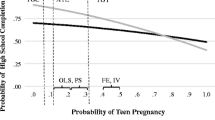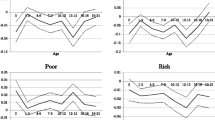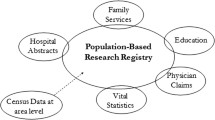Abstract.
Recent studies have begun to examine rigorously the links between early childbearing and subsequent socioeconomic status. Prominent in this literature has been a set of analyses that have used sibling fixed effects models to control for omitted variables bias. These studies report that the siblings difference procedure leads to smaller estimates of the effects of teen fertility than does standard regression analysis. While it is well known that the siblings fixed effects procedure makes strong assumptions regarding the type of omitted variables and is not necessarily robust to alternative assumptions, the assumptions of the procedure have not been explicitly examined. This paper uses 1979–1992 data from the National Longitudinal Survey of Youth to compare estimates of the income and education consequences of teenage and young adult fertility from standard regression and siblings fixed effects models with estimates from more general, alternative siblings models.
Similar content being viewed by others
Author information
Authors and Affiliations
Additional information
Received: 19 January 1998/Accepted: 6 April 1999
Rights and permissions
About this article
Cite this article
Ribar, D. The socioeconomic consequences of young women's childbearing: Reconciling disparate evidence. J Popul Econ 12, 547–565 (1999). https://doi.org/10.1007/s001480050113
Issue Date:
DOI: https://doi.org/10.1007/s001480050113




